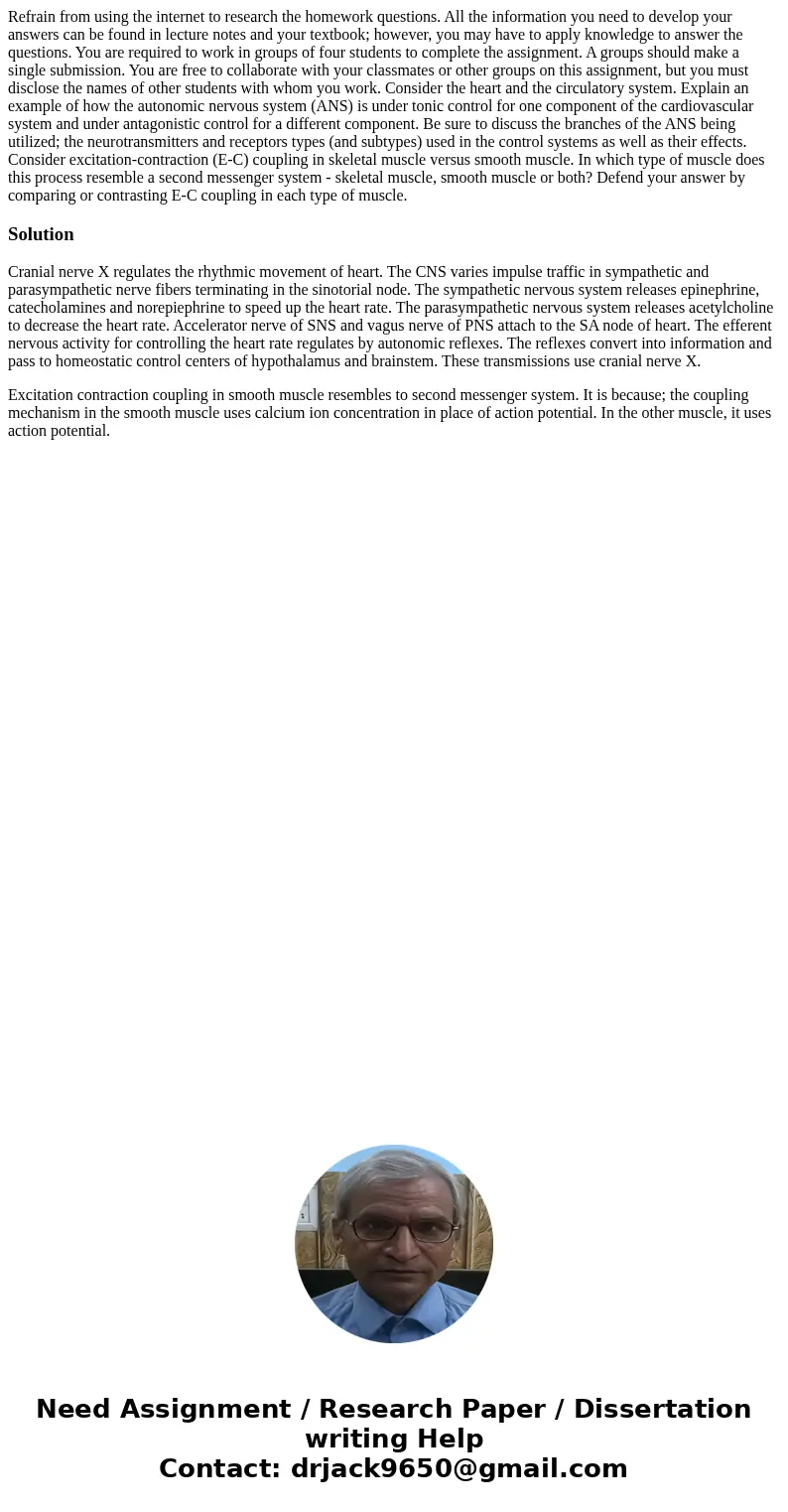Refrain from using the internet to research the homework questions. All the information you need to develop your answers can be found in lecture notes and your textbook; however, you may have to apply knowledge to answer the questions. You are required to work in groups of four students to complete the assignment. A groups should make a single submission. You are free to collaborate with your classmates or other groups on this assignment, but you must disclose the names of other students with whom you work. Consider the heart and the circulatory system. Explain an example of how the autonomic nervous system (ANS) is under tonic control for one component of the cardiovascular system and under antagonistic control for a different component. Be sure to discuss the branches of the ANS being utilized; the neurotransmitters and receptors types (and subtypes) used in the control systems as well as their effects. Consider excitation-contraction (E-C) coupling in skeletal muscle versus smooth muscle. In which type of muscle does this process resemble a second messenger system - skeletal muscle, smooth muscle or both? Defend your answer by comparing or contrasting E-C coupling in each type of muscle.
Cranial nerve X regulates the rhythmic movement of heart. The CNS varies impulse traffic in sympathetic and parasympathetic nerve fibers terminating in the sinotorial node. The sympathetic nervous system releases epinephrine, catecholamines and norepiephrine to speed up the heart rate. The parasympathetic nervous system releases acetylcholine to decrease the heart rate. Accelerator nerve of SNS and vagus nerve of PNS attach to the SA node of heart. The efferent nervous activity for controlling the heart rate regulates by autonomic reflexes. The reflexes convert into information and pass to homeostatic control centers of hypothalamus and brainstem. These transmissions use cranial nerve X.
Excitation contraction coupling in smooth muscle resembles to second messenger system. It is because; the coupling mechanism in the smooth muscle uses calcium ion concentration in place of action potential. In the other muscle, it uses action potential.

 Homework Sourse
Homework Sourse